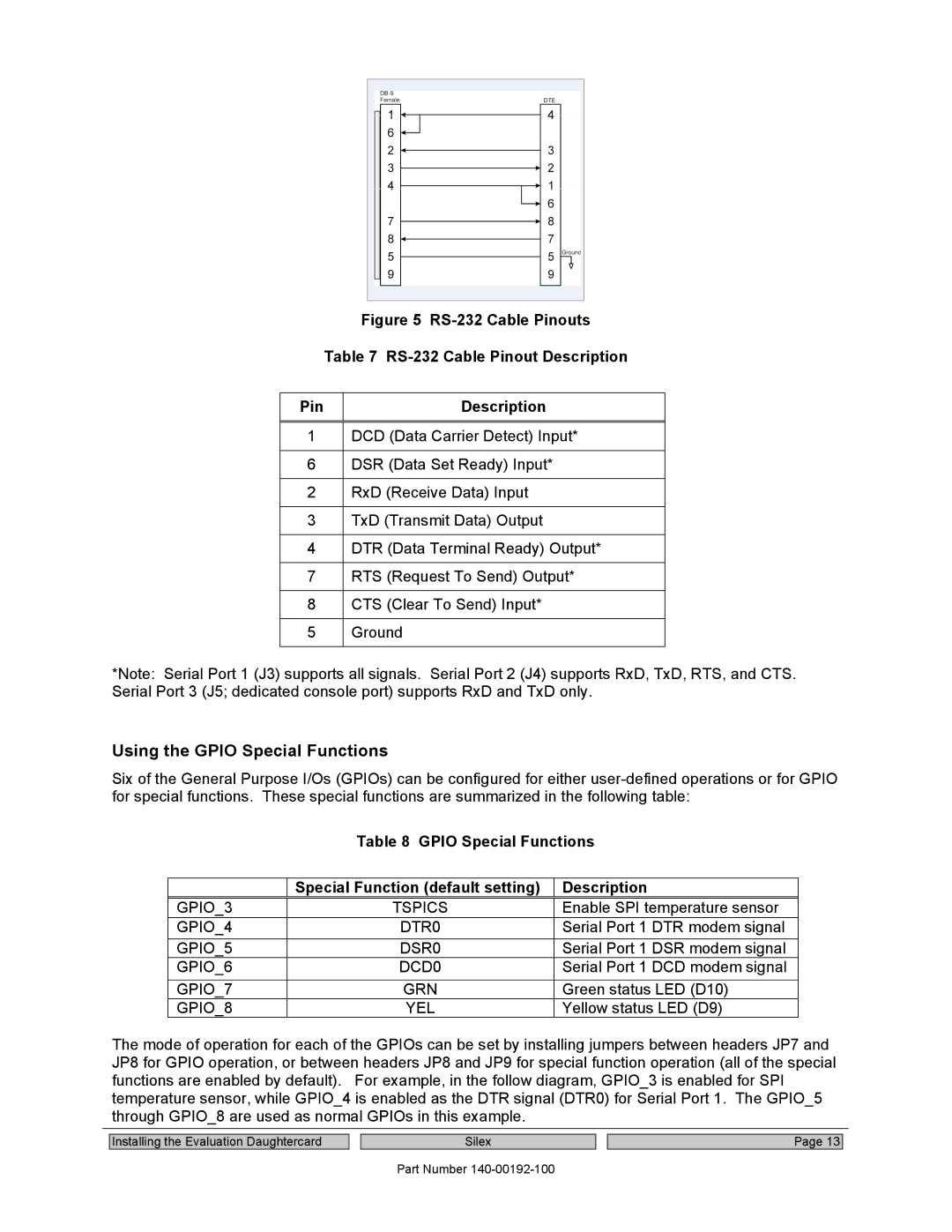
Figure 5 RS-232 Cable Pinouts
Table 7 RS-232 Cable Pinout Description
Pin | Description |
|
|
1 | DCD (Data Carrier Detect) Input* |
|
|
6 | DSR (Data Set Ready) Input* |
|
|
2 | RxD (Receive Data) Input |
|
|
3 | TxD (Transmit Data) Output |
|
|
4 | DTR (Data Terminal Ready) Output* |
|
|
7 | RTS (Request To Send) Output* |
|
|
8 | CTS (Clear To Send) Input* |
|
|
5 | Ground |
|
|
*Note: Serial Port 1 (J3) supports all signals. Serial Port 2 (J4) supports RxD, TxD, RTS, and CTS. Serial Port 3 (J5; dedicated console port) supports RxD and TxD only.
Using the GPIO Special Functions
Six of the General Purpose I/Os (GPIOs) can be configured for either
Table 8 GPIO Special Functions
| Special Function (default setting) | Description |
|
GPIO_3 | TSPICS | Enable SPI temperature sensor | |
GPIO_4 | DTR0 | Serial Port 1 | DTR modem signal |
|
|
|
|
GPIO_5 | DSR0 | Serial Port 1 | DSR modem signal |
GPIO_6 | DCD0 | Serial Port 1 | DCD modem signal |
|
|
| |
GPIO_7 | GRN | Green status LED (D10) | |
GPIO_8 | YEL | Yellow status LED (D9) | |
The mode of operation for each of the GPIOs can be set by installing jumpers between headers JP7 and JP8 for GPIO operation, or between headers JP8 and JP9 for special function operation (all of the special functions are enabled by default). For example, in the follow diagram, GPIO_3 is enabled for SPI temperature sensor, while GPIO_4 is enabled as the DTR signal (DTR0) for Serial Port 1. The GPIO_5 through GPIO_8 are used as normal GPIOs in this example.
Installing the Evaluation Daughtercard
Silex
Part Number
Page 13
